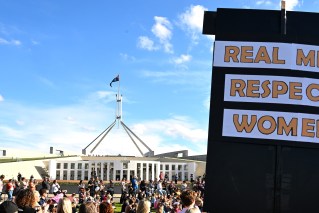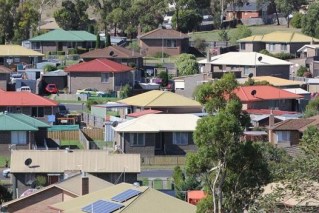Ladder shrinks: Rates, prices force down time it takes to raise deposit
The sinking property market, bolstered wages and higher interest rates on savings accounts have shaved months off the time it takes to save a deposit on a first home.

The time it takes to raise a deposit for a home has shrunk by more than 12 months. (Image: Unsplash)
While higher mortgage rates and inflation are weighing on borrowing capacity – and subsequently home prices – Domain analysis shows improving interest rates on savings accounts and higher pay packets have driven down the time it takes to save for an entry-priced home in every capital city except Adelaide.
Saving a lump-sum deposit remains one of the main barriers to home ownership.
The impact of these factors for first home buyers is to wipe six months off the deposit-saving period needed to buy the standard entry-level house compared to this time last year.
For units, the environment of higher inflation and interest rates has contracted the savings period by two months.
Sydney and Canberra experienced the most dramatic decreases in the time needed to save a deposit, cutting 13 months from the typical savings period.
But despite trimming more than a year off the time it takes a couple aged 25-34 to save a 20 per cent deposit on an entry-priced house, it would still take the average young couple six years and eight months to save for a home in Sydney.
In Canberra, it would take six years.
Darwin has the shortest lead time of any capital city, at three years and six months, followed by Perth at three years and seven months.
Across the regions, it takes three years and 10 months on average to save a home.
Domain chief of research and economics Dr Nicola Powell said rock-bottom interest rates made it cheaper to borrow and repay a loan but those low rates drove extreme property price growth.
This narrative has shifted since the Reserve Bank started hiking interest rates aggressively last year to counter rising inflation.
“Now in 2023, first-home buyers are facing less competition and softer prices, reshaping the affordability conversation,” Powell said.
While rising interest rates have sliced the time needed to save a deposit, they have also lifted the cost of servicing a loan, complicating the affordability picture.
Plus, the property downturn may have found its low point, with CoreLogic data revealing a stabilisation in average prices in February that has evolved into price gains in several cities in March.
Signs that the Reserve Bank is close to the top of its rate-hiking cycle may support a recovery in home prices, along with the expected rebound in migration, tight rental markets and low rates of rental listings.
The minutes from the RBA’s March meeting, to be released on Tuesday, will likely offer some hints for future interest rate decisions following a softening in tone in recent communications.
The RBA lifted rates by another 25 basis points to 3.6 per cent at its last meeting.












